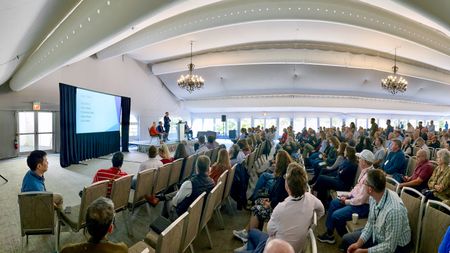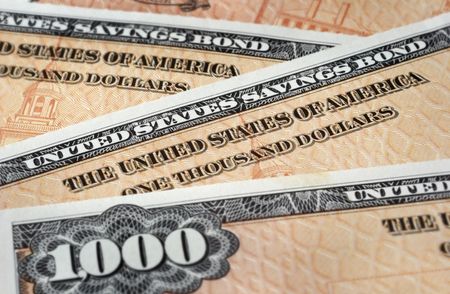The One-Stop Solution
Life-cycle funds are the no-hassle way to invest for retirement. Buy 'em and forget 'em.

Karen Young is an amateur photographer, plays golf, enjoys traveling and loves "anything outdoors." Notice that investing isn't one of her interests. She saves regularly, but the St. Louis corporate writer takes no pleasure in picking and choosing among stocks and mutual funds. "That's why I love target-retirement funds," Young says. "They do all the work for me."
Judging by the $60 billion now in target-retirement funds, Young isn't alone. Also called life-cycle funds, they put your retirement saving on autopilot and are simplicity itself. Just select the fund whose name contains a date about the same year as you plan to retire. Add money regularly. Relax. These funds become more conservative -- fewer stocks and more bonds -- as you grow older, so they match your need for more financial stability as you approach and live in retirement. "The fund company picks the funds and makes the changes," says Young, 38. "They're experts, so I don't have to be one."
Of course, a great idea is only as good as its execution. And as with all types of funds, life-cycle funds have stars and stinkers. Fortunately, you can eliminate many funds based on the expenses they charge. Ignore ones whose annual fees approach or top 2%, and try to pay less than 1%. Because target-retirement funds often invest in other funds, they can have two layers of fees -- those of the under-lying funds and an additional expense on top. Be sure you know what all the relevant fees are. Some target-retirement funds even charge sales loads. Unless you're getting financial advice, you shouldn't pay such a fee.

Sign up for Kiplinger’s Free E-Newsletters
Profit and prosper with the best of expert advice on investing, taxes, retirement, personal finance and more - straight to your e-mail.
Profit and prosper with the best of expert advice - straight to your e-mail.
Performance, of course, is a chief reason for choosing life-cycle funds. Because most life-cycle funds haven't been around for more than a few years, it's impossible to make performance comparisons for the past five- and ten-year periods. However, based on the performance of funds that are used as the building blocks of life-cycle funds, we think American Century, Fidelity, T. Rowe Price and Vanguard all offer superior choices.
Difference of opinion
Another component of performance is the recipe used to mix the funds -- especially the proportions of stocks and bonds. The more bonds you use, the less volatile the anticipated performance, but the lower the long-term return.
Fund companies use distinctly different cookbooks. For example, T. Rowe Price Retirement 2015 invests 71% of assets in stocks, while Vanguard Target Retirement 2015 has a paltry 47% in stocks (see the table). Why the huge difference? For many fund companies, investor behavior has a strong influence on the mix. [Editor's note: Vanguard announced earlier this year that its target funds will lean more heavily toward stocks. Vanguard is also tweaking its mix for some funds. Read more.]
American Century and Vanguard take into account that investors in 401(k) plans often panic and lose money by selling stocks after big declines. "We don't want to give people an incentive to do something stupid," says American Century's Jeff Tyler.
Fidelity found that retirees generally spend their money faster than they should and factored this tendency into designing its Freedom funds. That, again, led to a greater proportion of bond funds to reduce volatility.
Of our four favorite families for life-cycle funds, we like T. Rowe Price's recipes best. T. Rowe has the highest percentage in stocks and comes closest to the proportion Kiplinger's recommends for retirement-savings portfolios. Jerome Clark, manager of the T. Rowe Price Retirement funds, notes that, over time, the risk from having a high percentage of your money in stocks or stock funds diminishes. "In investing for retirement, your biggest risk is outliving your money," he says.
[page break]
Say you want to invest in a fund family's life-cycle fund but think it's weak on stocks. There's an easy solution: When investing in the Fidelity or American Century funds, simply add ten years to your retirement year (add 15 years if you're using the Vanguard funds). Once you're retired, the American Century and T. Rowe Price income funds both provide optimal allocations to stock investments.
Of course, most investors own more than just a life-cycle fund. Keep in mind that you need to properly balance all your holdings.
Aside from their stock-versus-bond recipes, our favorite life-cycle fund families differ in other ways:
American Century. When it comes to the ingredients in its recipes, this Kansas City-Ðbased firm rules. American Century puts a small portion of the assets of most target funds in its inflation-adjusted bond fund, its real estate fund and its emerging-markets fund, all of which provide diversity. The total expense ratios range from 0.83% to 0.96%. The problem: American Century's foreign funds have generally been subpar. To turn things around, the firm hired a new lead foreign manager in 2004.
Fidelity. Although Fidelity's target funds do a good job, they could do better. A couple of the firm's best stock funds, most notably Contrafund, are missing from the target-funds mix. The expense ratios range from 0.58% to 0.79%. Over the past five years, Freedom 2010, 2020, 2030 and 2040 have returned an annualized 4%, 3%, 3% and 2%. For three years, the annualized returns for the four funds have been 9%, 12%, 13% and 14%.
T. Rowe Price. The Baltimore firm runs the best target funds available. Karen Young was lucky to have them offered in a former employer's 401(k) plan, and she rolled over her Retirement 2030 fund into an IRA when she switched jobs. Laudably, T. Rowe Price target funds invest about 5% more in foreign stock funds than the other three firms do. Expense ratios range from 0.64% to 0.80%. Too new to have five-year records, the funds have done well in the bull market of the past three years. Retirement 2010 is up an annualized 12%, 2020 has returned 14%, and 2030 and 2040 have both gained 15%.
Vanguard. The conservatism of these target funds dampens their potential. Still, they're good choices because they're run entirely with Vanguard's own top-notch, low-cost index funds. Expenses range from 0.20% to 0.21%. Because they were launched in 2003, they lack three-year records. But those low expenses are bound to pay off over time.
Many 401(k) and 403(b) retirement plans now offer life-cycle funds, though you may have to choose among lesser funds. Given the tax advantages of such plans, and the benefits of diversification inherent in life-cycle funds, most target funds are still worth investing in -- assuming you're like Young and don't want the hassle of picking and monitoring funds yourself.
Get Kiplinger Today newsletter — free
Profit and prosper with the best of Kiplinger's advice on investing, taxes, retirement, personal finance and much more. Delivered daily. Enter your email in the box and click Sign Me Up.

-
 Stagflation: What It Is and Why Retirees Should Care
Stagflation: What It Is and Why Retirees Should CareStagflation — the economic bogeyman of the 1970's — may return to the US. Here's what it could mean to your retirement.
By Donna Fuscaldo Published
-
 Why Losing Your Job Could Be the Best Opportunity to Plan Your Future
Why Losing Your Job Could Be the Best Opportunity to Plan Your FutureAmid this uncertainty lies an opportunity for strategic reassessment and personal growth.
By Mario Hernandez Published
-
 Best Banks for High-Net-Worth Clients 2024
Best Banks for High-Net-Worth Clients 2024wealth management These banks welcome customers who keep high balances in deposit and investment accounts, showering them with fee breaks and access to financial-planning services.
By Lisa Gerstner Last updated
-
 Stock Market Holidays in 2025: NYSE, NASDAQ and Wall Street Holidays
Stock Market Holidays in 2025: NYSE, NASDAQ and Wall Street HolidaysMarkets When are the stock market holidays? Here, we look at which days the NYSE, Nasdaq and bond markets are off in 2025.
By Kyle Woodley Last updated
-
 Stock Market Trading Hours: What Time Is the Stock Market Open Today?
Stock Market Trading Hours: What Time Is the Stock Market Open Today?Markets When does the market open? While the stock market does have regular hours, trading doesn't necessarily stop when the major exchanges close.
By Michael DeSenne Last updated
-
 Bogleheads Stay the Course
Bogleheads Stay the CourseBears and market volatility don’t scare these die-hard Vanguard investors.
By Kim Clark Published
-
 The Current I-Bond Rate Until May Is Mildly Attractive. Here's Why.
The Current I-Bond Rate Until May Is Mildly Attractive. Here's Why.Investing for Income The current I-bond rate is active until November 2024 and presents an attractive value, if not as attractive as in the recent past.
By David Muhlbaum Last updated
-
 What Are I-Bonds? Inflation Made Them Popular. What Now?
What Are I-Bonds? Inflation Made Them Popular. What Now?savings bonds Inflation has made Series I savings bonds, known as I-bonds, enormously popular with risk-averse investors. So how do they work?
By Lisa Gerstner Last updated
-
 This New Sustainable ETF’s Pitch? Give Back Profits.
This New Sustainable ETF’s Pitch? Give Back Profits.investing Newday’s ETF partners with UNICEF and other groups.
By Ellen Kennedy Published
-
 As the Market Falls, New Retirees Need a Plan
As the Market Falls, New Retirees Need a Planretirement If you’re in the early stages of your retirement, you’re likely in a rough spot watching your portfolio shrink. We have some strategies to make the best of things.
By David Rodeck Published